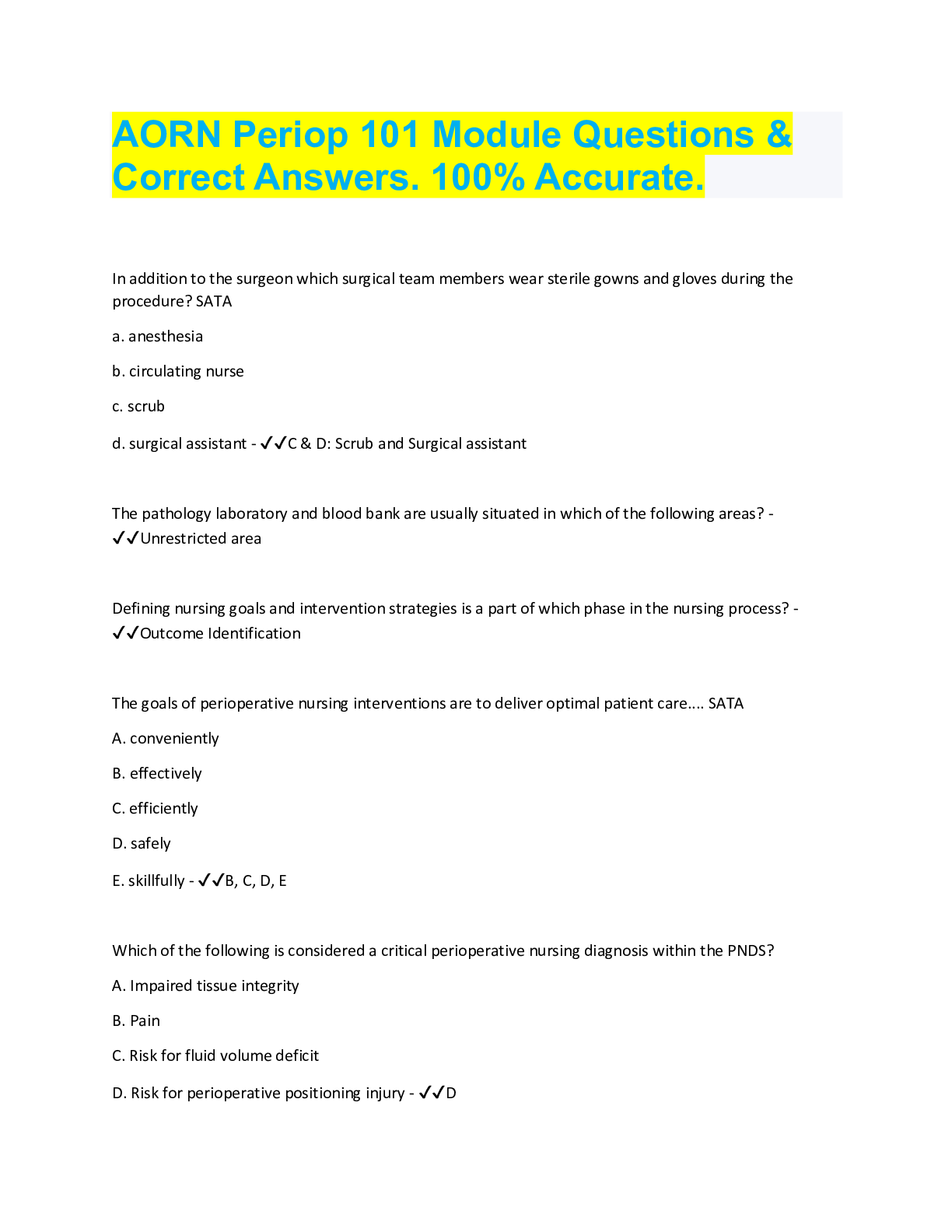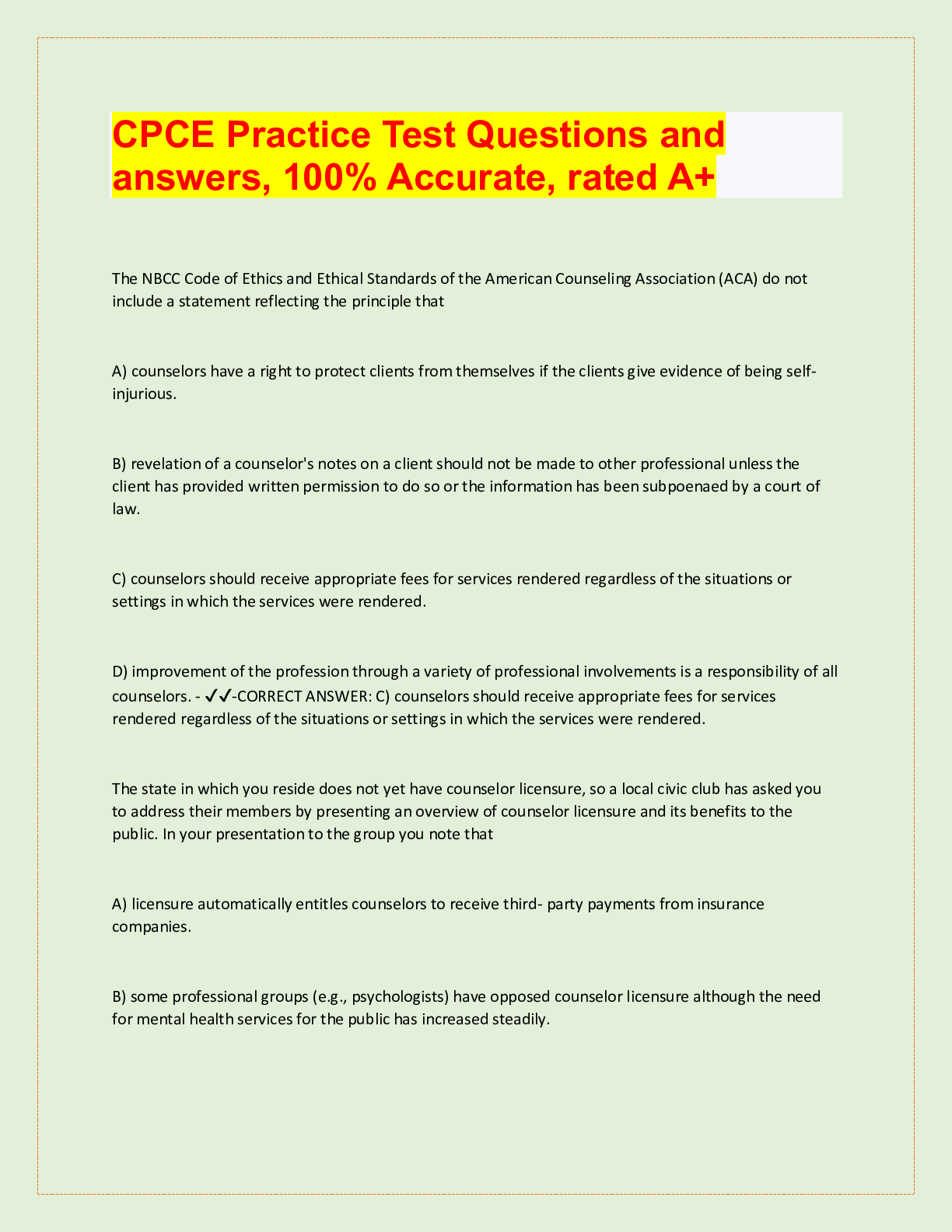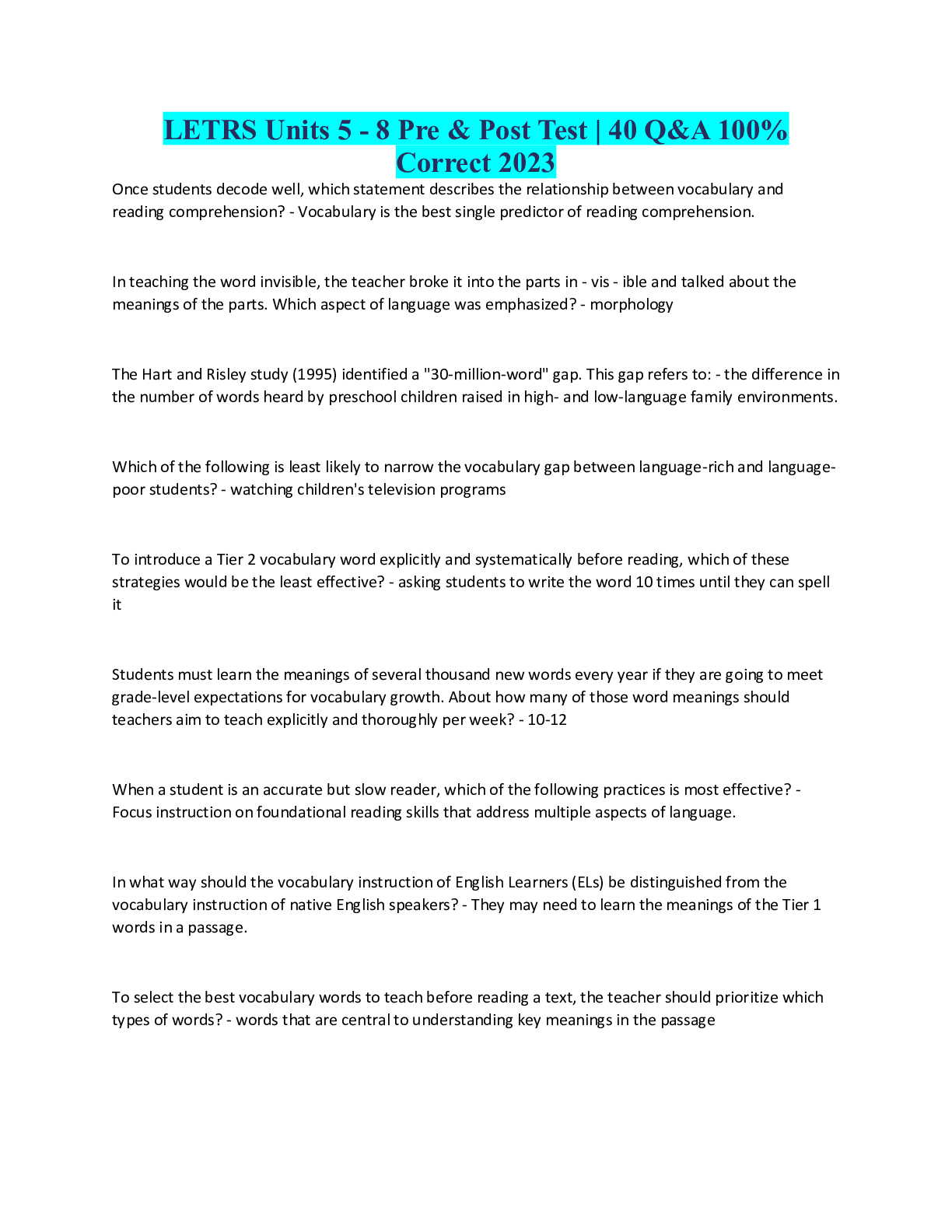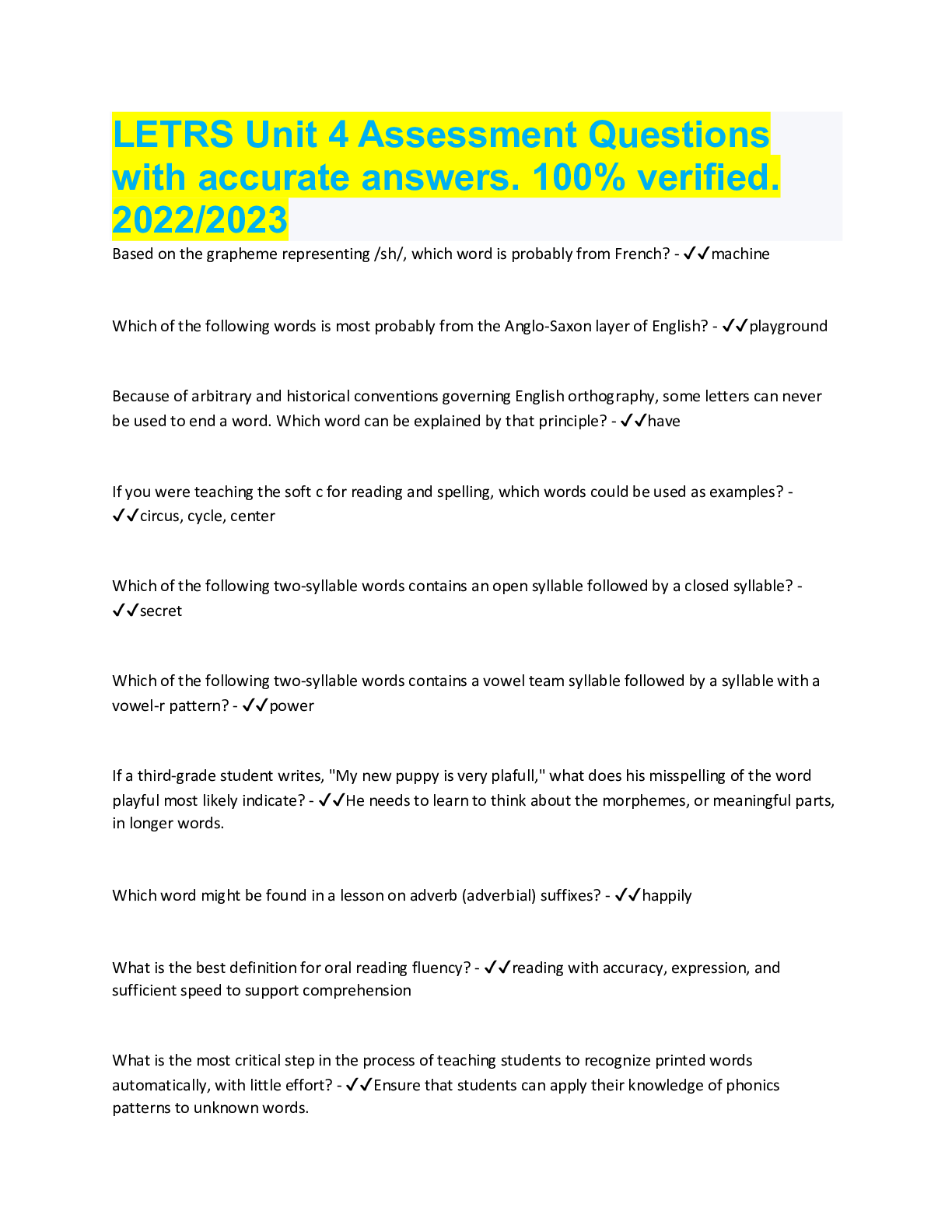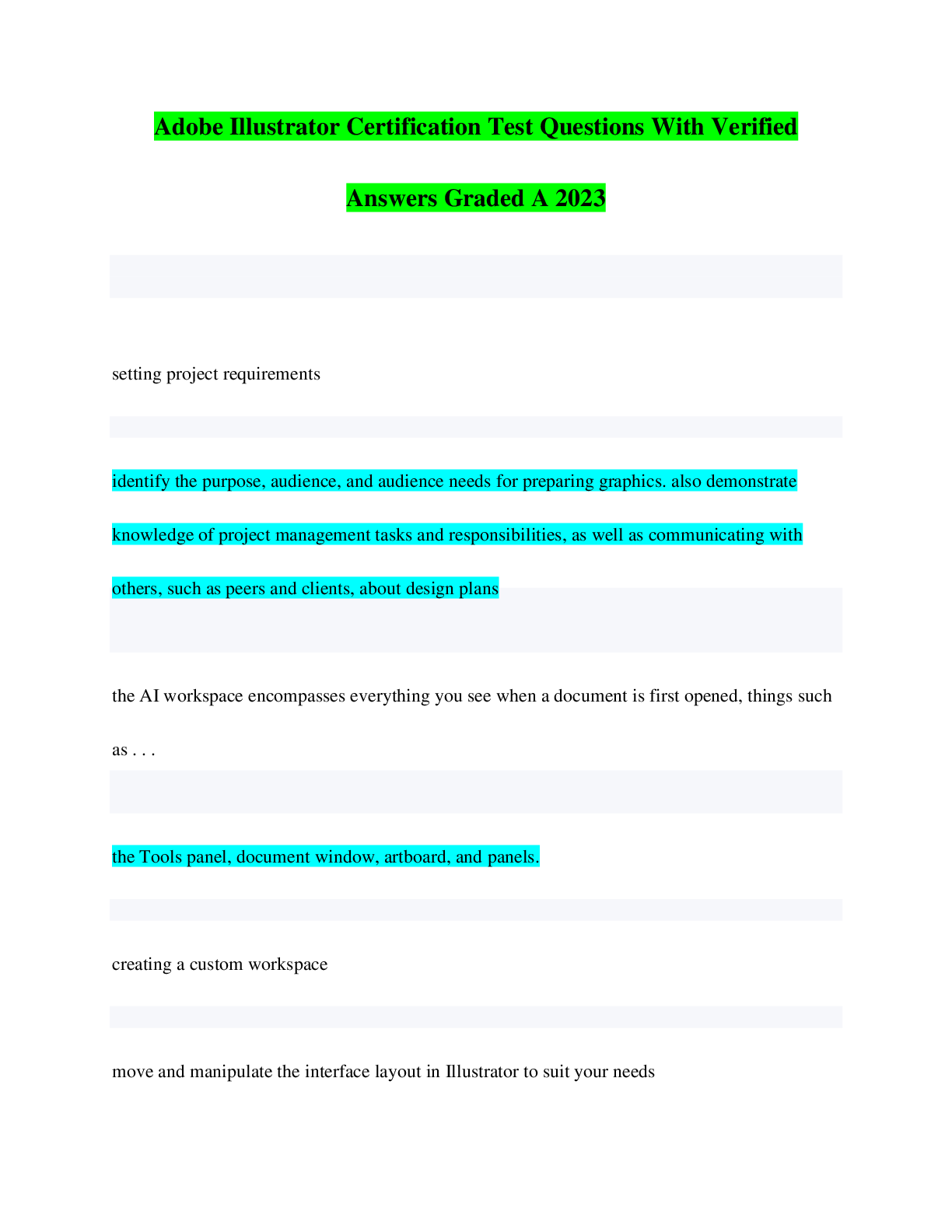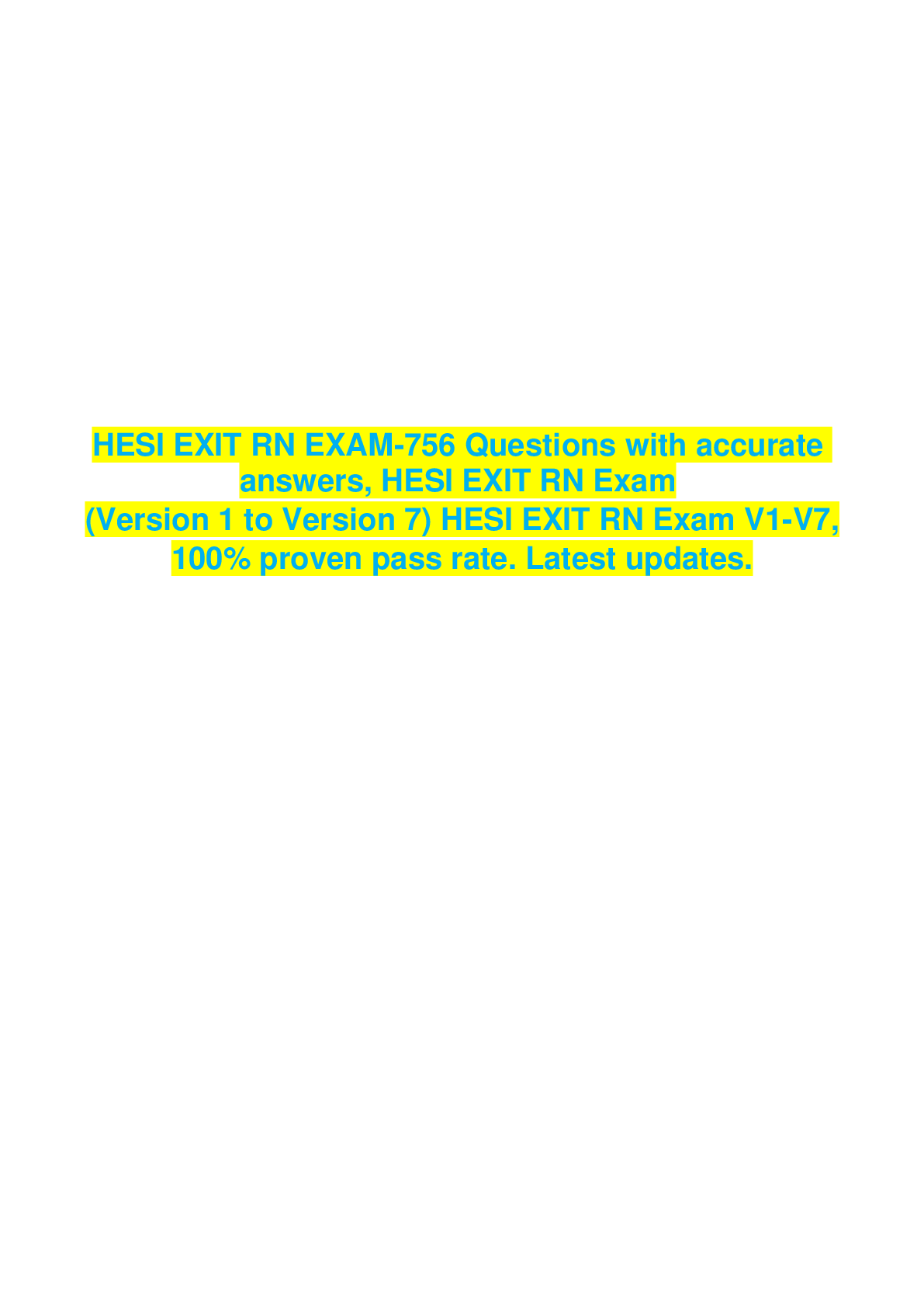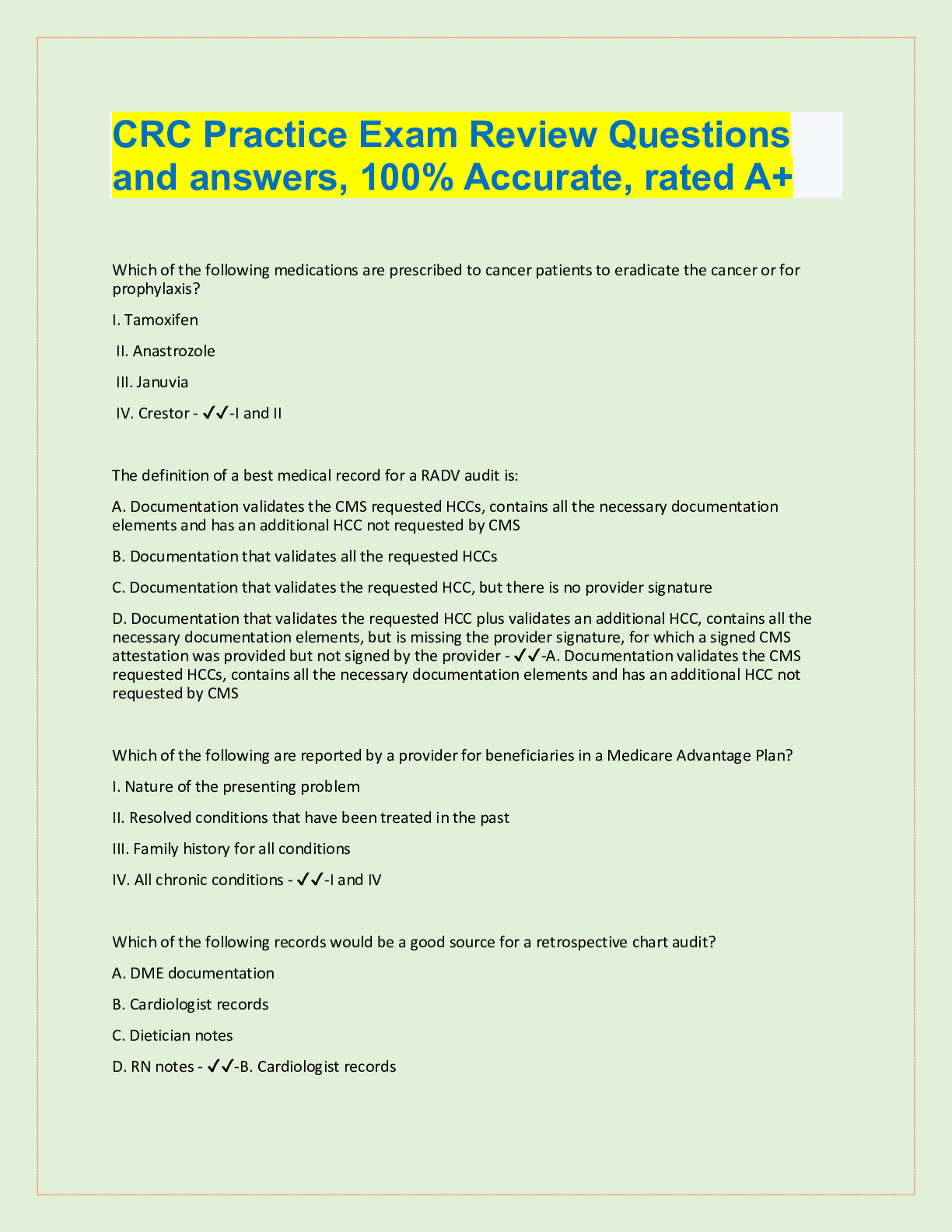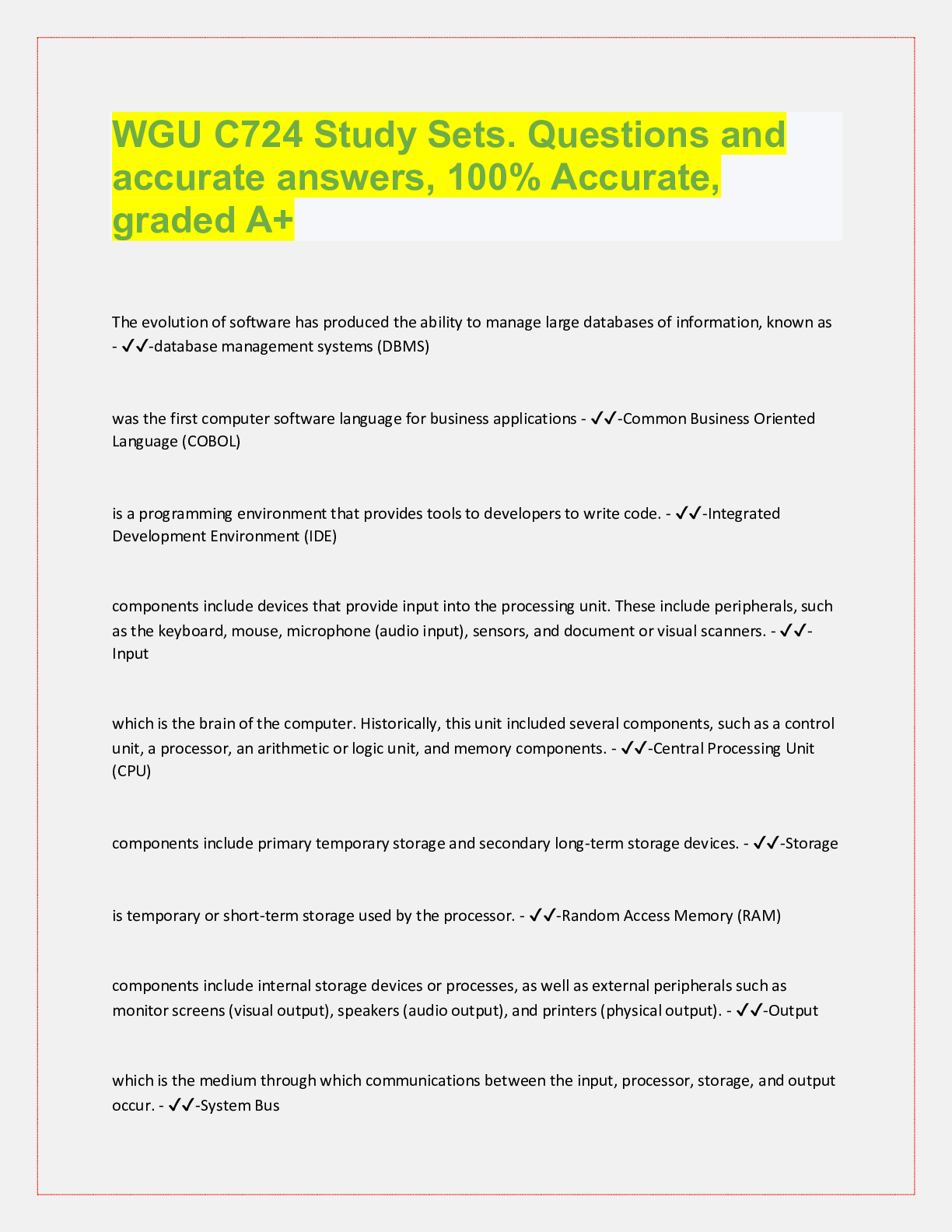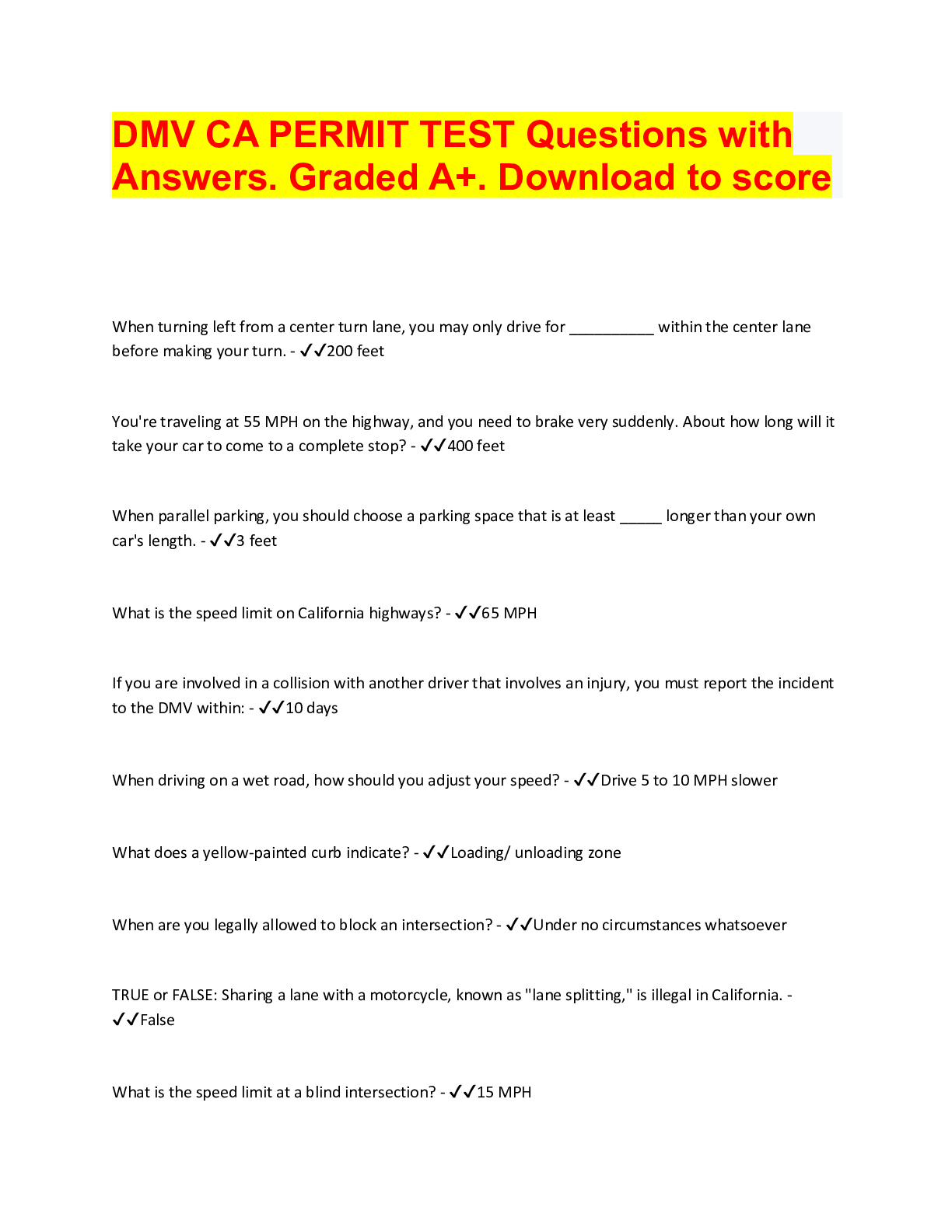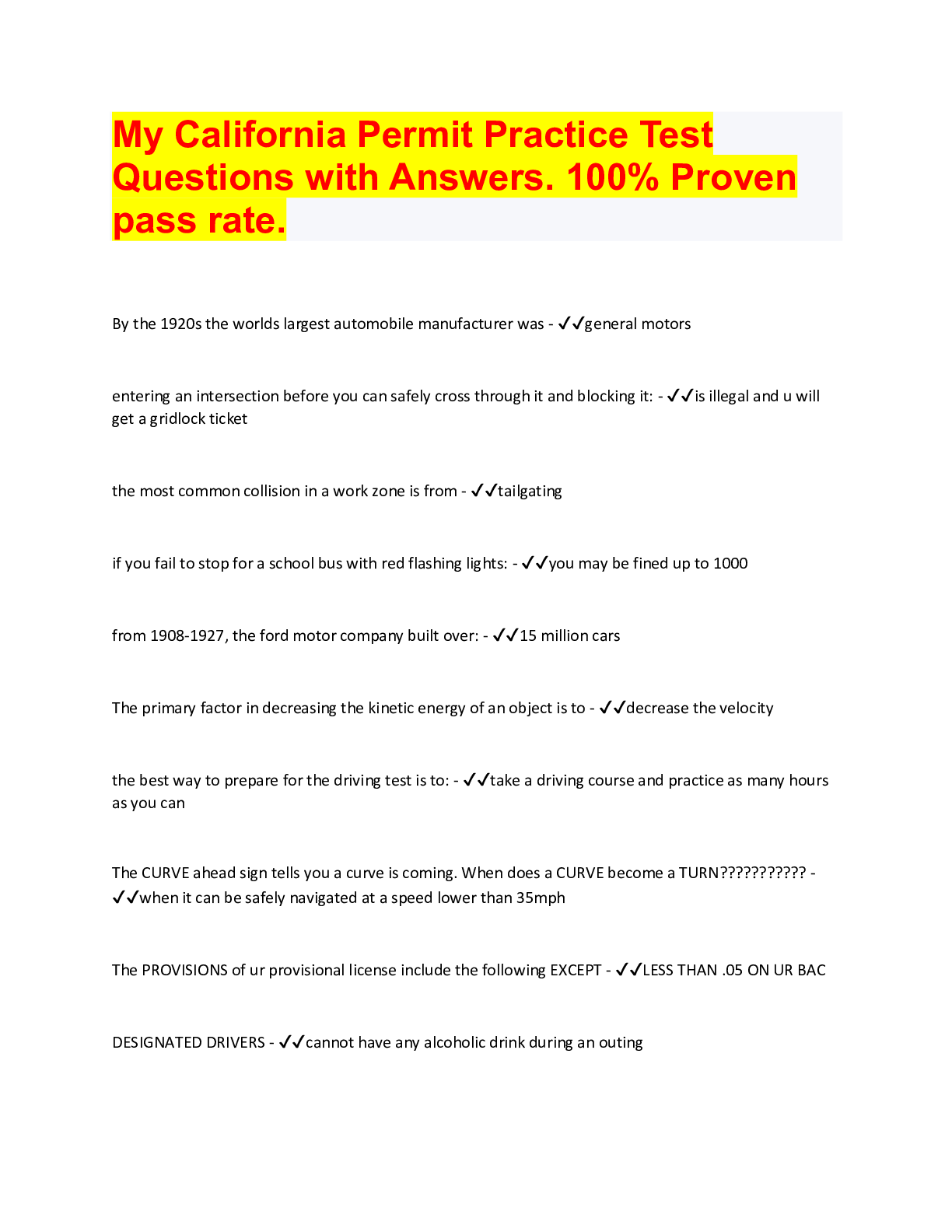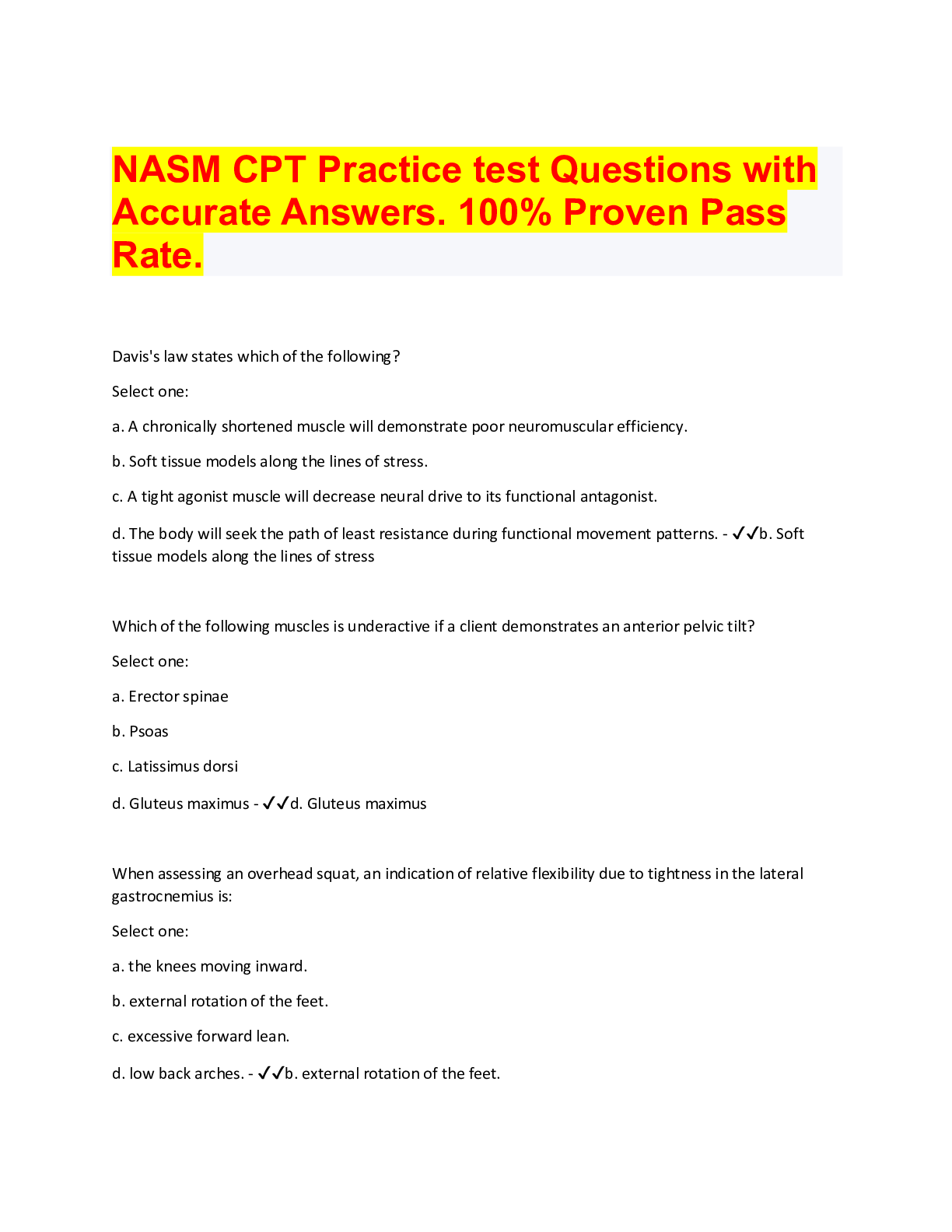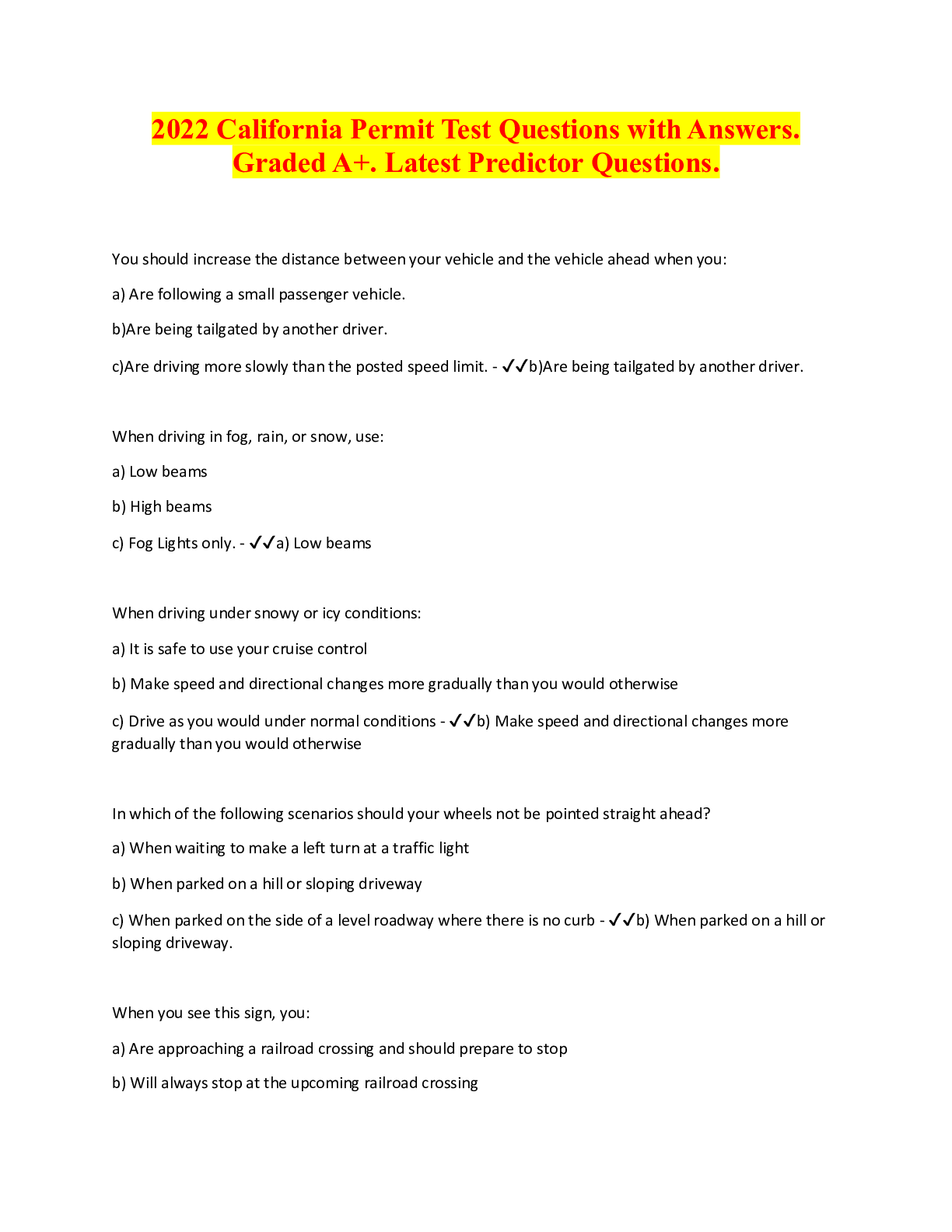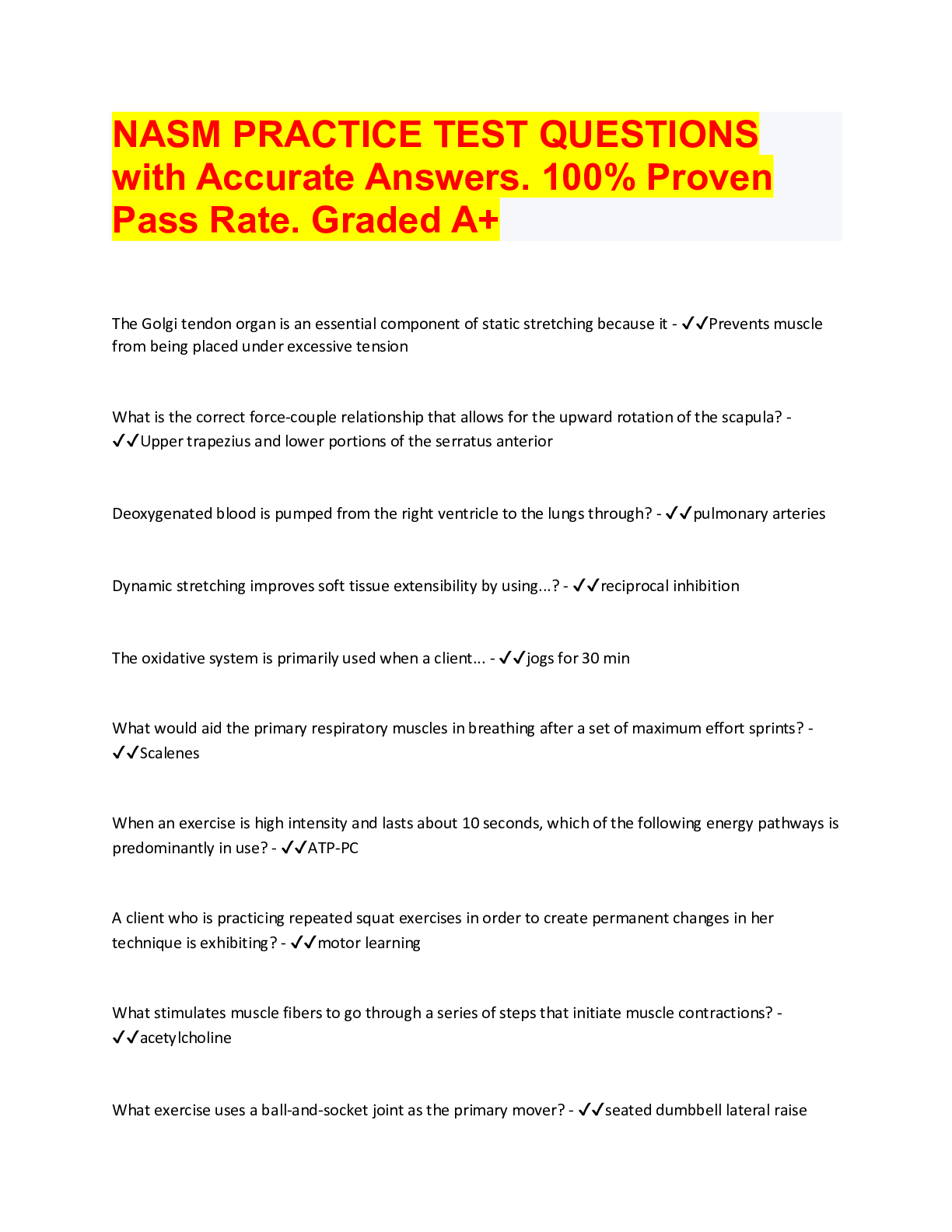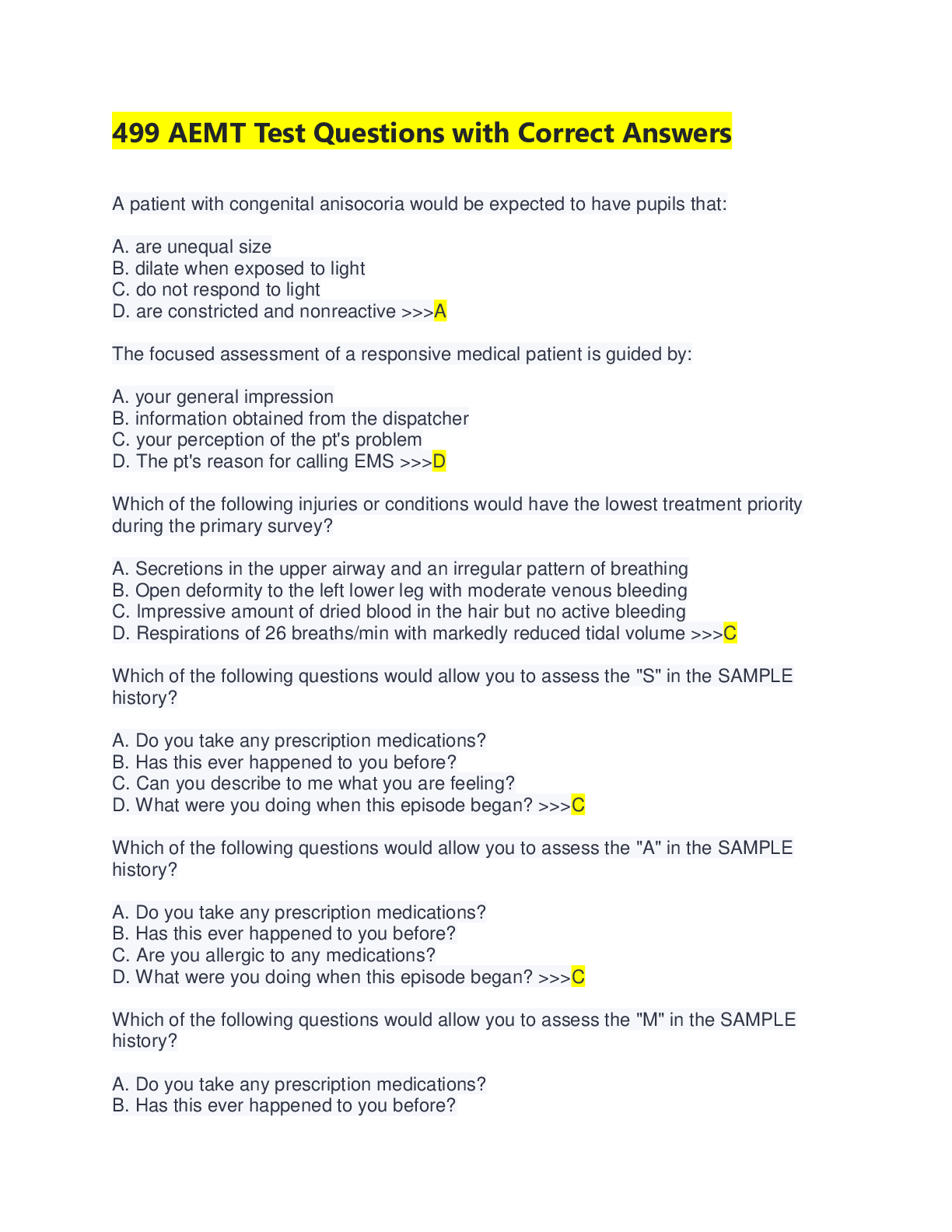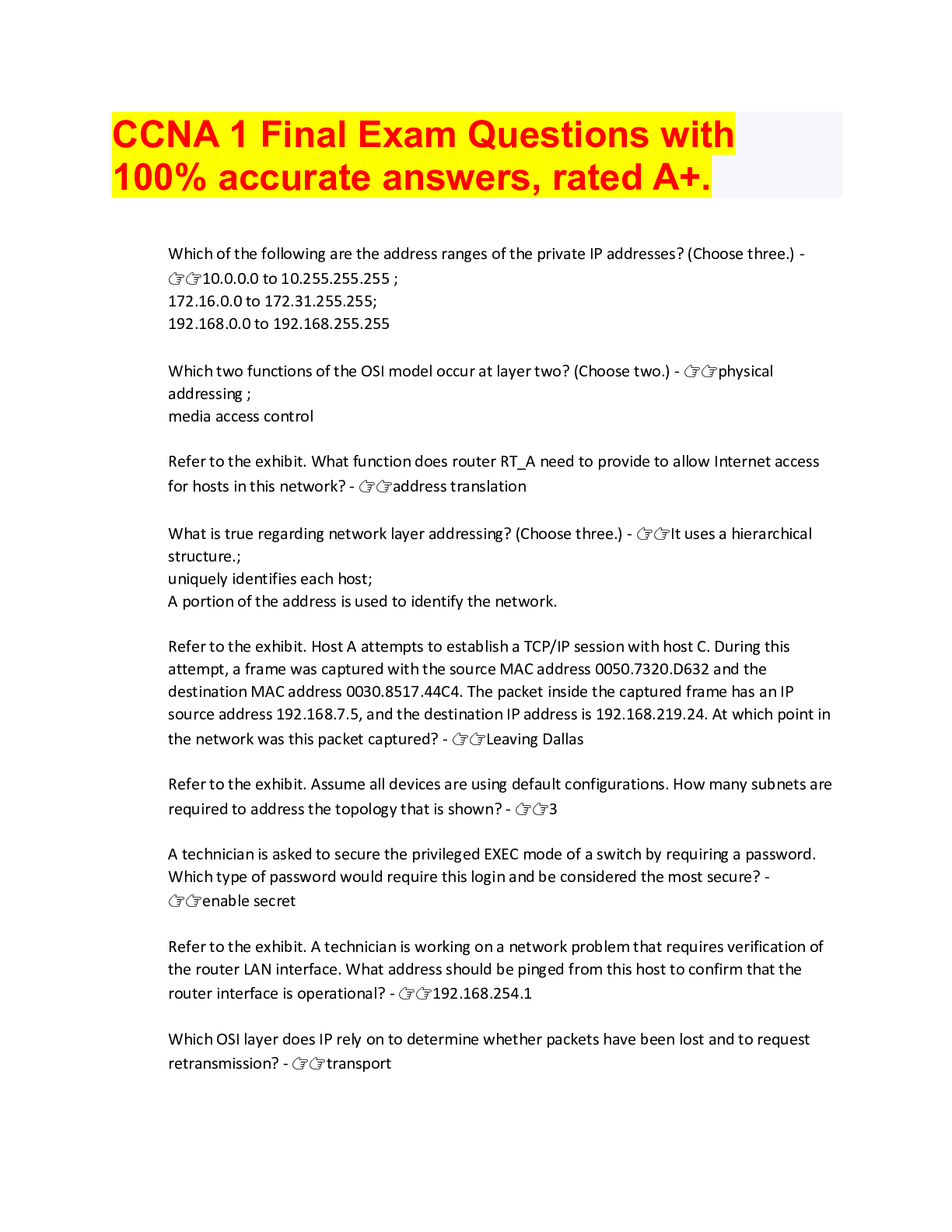*NURSING > QUESTIONS & ANSWERS > CNA SKILLS TEST Questions with accurate answers, 100% Accurate, graded A+ (All)
CNA SKILLS TEST Questions with accurate answers, 100% Accurate, graded A+
Document Content and Description Below
CNA SKILLS TEST Questions with accurate answers, 100% Accurate, graded A+ Beginning Procedure Actions - ✔✔-1.*Wash hands thoroughly prior to entering room or when in room 2. Assemble needed ... equipment 3.Go to resident's room, knock and pause before entering. 4. *Introduce self by name and title 5. *Identify the resident by facility policies and address them by name. 6. Ask visitors to leave the room and inform them where they may wait. 7.*Provide privacy throughout procedure; pull curtains, shut door, properly cover patient as needed. 8.*Explain procedure to resident; speak clearly, slowly and directly to resident, maintaining face to face contact whenever possible. 9. Answer resident's questions about the procedure. 10. Allow resident to assist as much as possible. 11. Raise the bed to a comfortable working height. Ending Procedure Actions - ✔✔-1.*Position resident comfortably. 2.*Return bed to lowest position. 3.*Leave signal cord, telephone and water within reach. 4.*Perform a general safety check. 5. Open curtain. 6. Care for equipment following policy. 7.*Wash hands. 8. Let visitors know they may return. 9.*Report completion of task and observation of any abnormalities and record actions and observations. Vital Signs: Blood Pressure - ✔✔-1.Clean ear pieces and diaphragm with antiseptic wipe. 2. Position residents arm resting on firm surface with palm up. 3.Wrap cuff around arm with bladder over artery 1" above antecubital space-cuff even and snug. 4. Place ear pieces in ears and place diaphragm over artery. 5. Inflate cuff to no more than 180mm/Hg or may use pulse obliteration method, candidate choice 6. Deflate cuff, note systolic reading, and note point of diastolic reading. 7. Accurate reading within 4mm/Hg window on both systolic and diastolic 8.*Accurately record blood pressure. Vital Signs: Temperature (Tympanic) - ✔✔-1. Place tympanic thermometer cover on. 2. Ask person to turn head so ear is in front of you, put new probe cover on. 3. Pull back on the ear (gentle, firm) to straighten the ear canal and insert probe gently into ear canal directed toward nose. 4. Start the thermometer. 5. Wait until you hear a beep or flashing light and remove. 6.*Read the temperature and record accurately. Vital Signs: Temperature (Oral/Axillary) - ✔✔-1. *Ask the person if they have eaten or consumed a beverage, cold or hot or smoked within the last 15 minutes. 2. Place a sheath on the probe. 3. Correct placement for obtaining oral reading or axillary reading. 4. If necessary, hold the probe in place for oral 5. Leave the probe in place until the instrument beeps. 6. Remove the probe sheath from the probe and dispose of properly. 7. Replace the probe. 8.*Red the temperature and record accurately. Vital Signs: Pulse (Radial/Apical) - ✔✔-1. Locate pulse at the correct site. 2. Count pulse for 30 seconds and double or count for 1 full minute. Accuracy within + or -4 beats per minute. 3.*Document Accurately Vital Signs: Respiratory Rate - ✔✔-1. Count respirations for 1 full minute. Accuracy within + or -2 breaths. 2.*Document Accurately Handwashing - ✔✔-1. Don't touch the sink with your uniform. 2. Turn water to warm 3. Wet and soap hands 4.*Wash hands with fingers down for 15-30 seconds, including wrist, nails and between fingers. 5. Rinse with fingertips down. 6. Use dry paper towel to dry hands. 7.*Use a paper towel to turn off faucets. 8.*Immediately discard paper towels in trash without touching to your other hand. Skill 1: Pressure Ulcer Prevention *Equipment: Pillows, Elbow/Heel Protectors - ✔✔-1.*Demonstrate 2 ways to prevent pressure ulcers: -Proper use of bed cradle -Elbow/heel protector* -Using pillows to reduce skin to skin contact* -Making sure sheets are wrinkle free 2.*Explain 2 other ways to prevent pressure ulcers: -Changing position frequently -Good nutrition and hydration -Provide good perineal care (keep resident clean and dry) -Be careful of the resident's skin (no shearing or friction) -Check resident's skin carefully-provide good skin care -Assist your resident to the bathroom frequently -Encourage mobility -Use pressure reducing devices Skill 2: Position Foley Catheter/Bag/Tubing *Equipment: Catheter Bag (Could already be on patient) - ✔✔-1.Secure tubing to resident's inner thigh or abdomen. 2.*Place tubing over leg 3. Position tubing to facilitate gravitational flow, no kinks. 4.*Attach to bed frame (not over or on side rail) always-below level of bladder. 5. Keep catheter bag from touching floor. Skill 3: Oxygen *Equipment: Nasal Cannula (Could already be on patient) - ✔✔-1.*Demonstrate correct placement of O2 nasal cannula (place prongs following the contour of the nasal passage, tubing around ears and under chin (not behind head)) 2.*When asked by nurse-demonstrate ho [Show More]
Last updated: 1 year ago
Preview 1 out of 14 pages
Instant download

Instant download
Reviews( 0 )
Document information
Connected school, study & course
About the document
Uploaded On
Mar 17, 2023
Number of pages
14
Written in
Additional information
This document has been written for:
Uploaded
Mar 17, 2023
Downloads
0
Views
30






